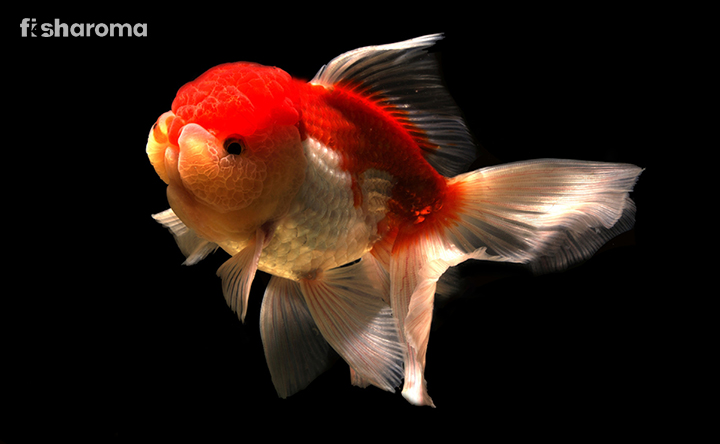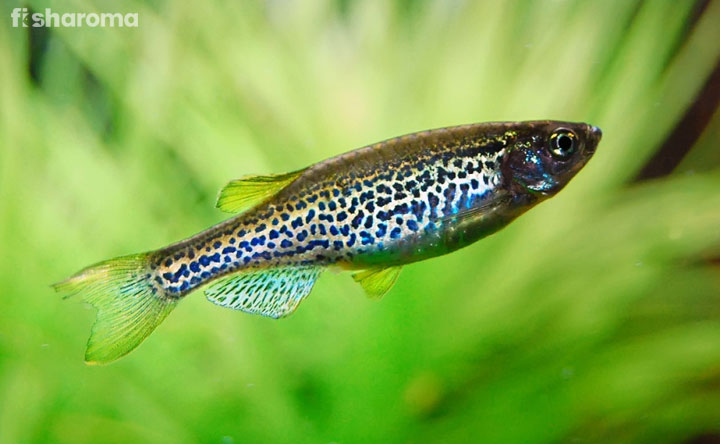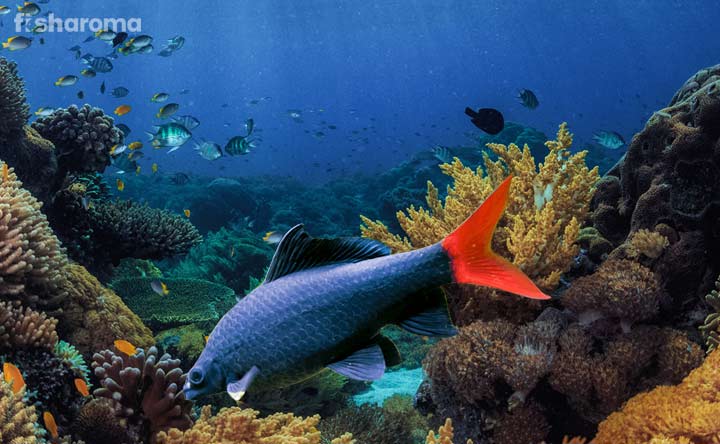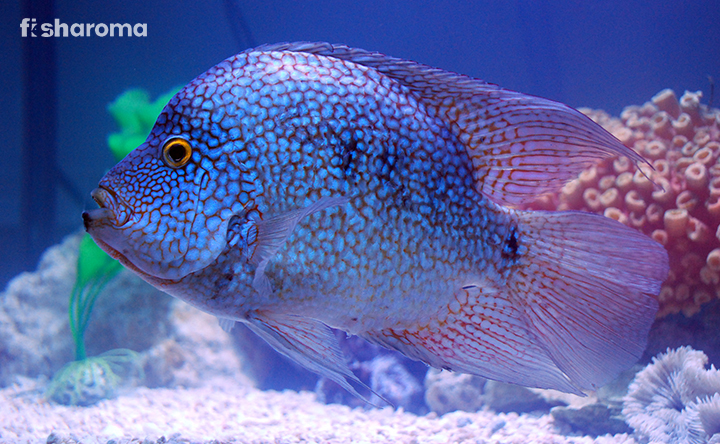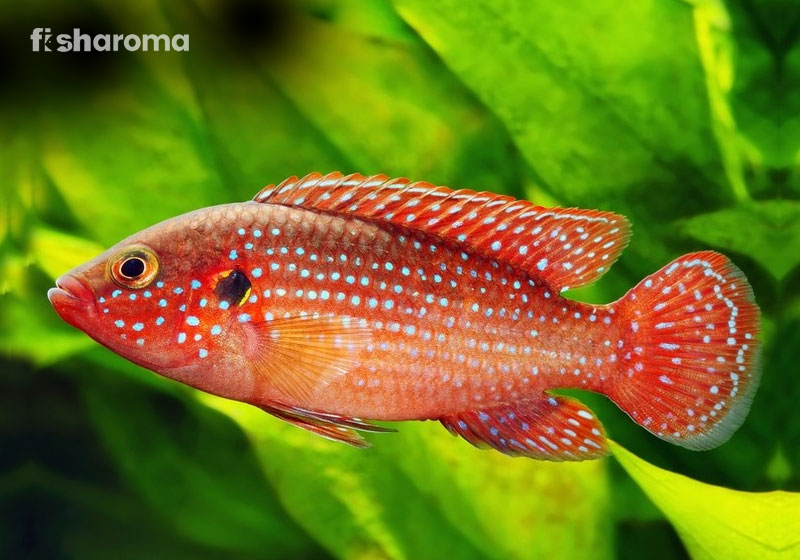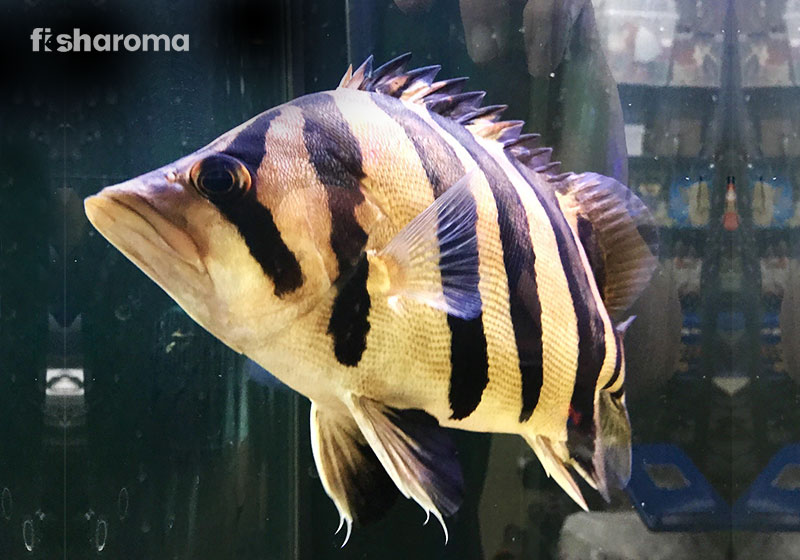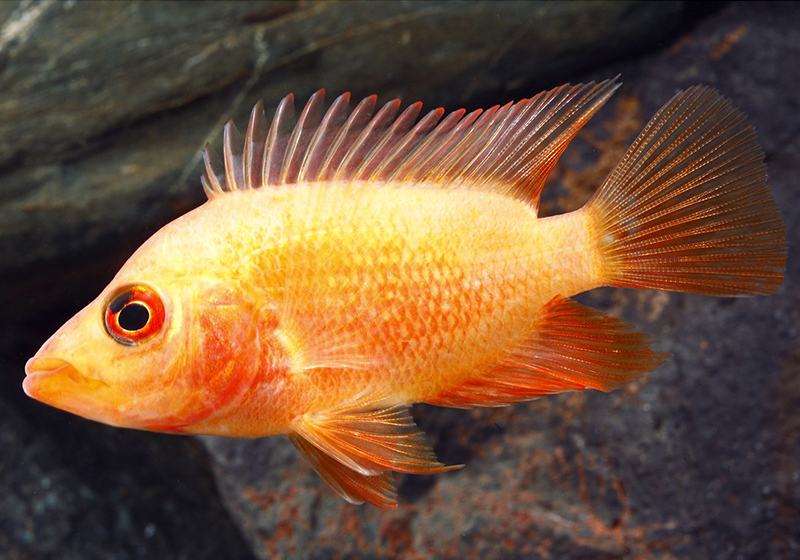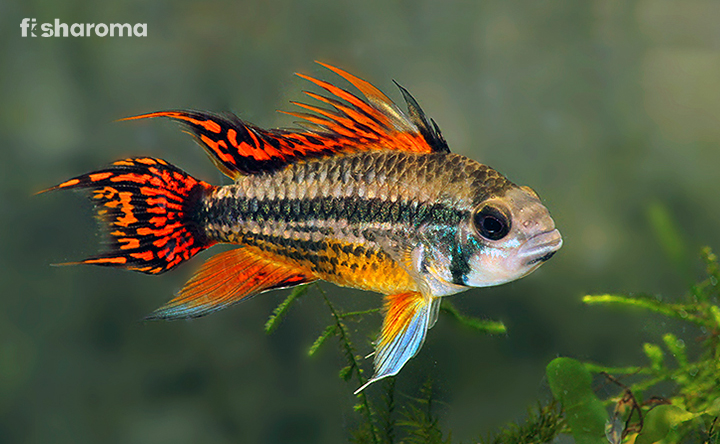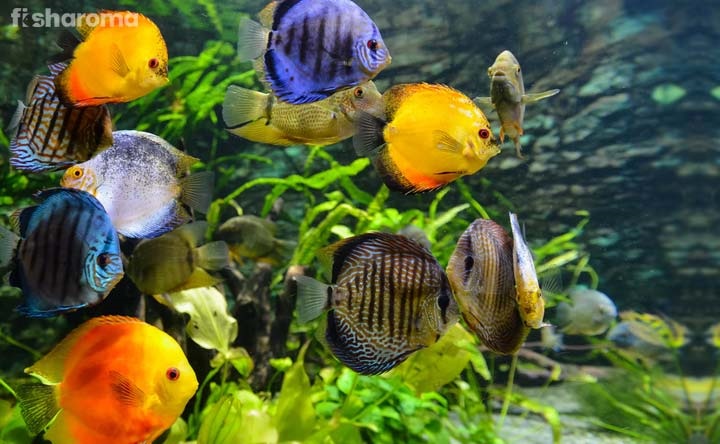Female Betta Fish- A Care Guide To Siamese Fighting Fish
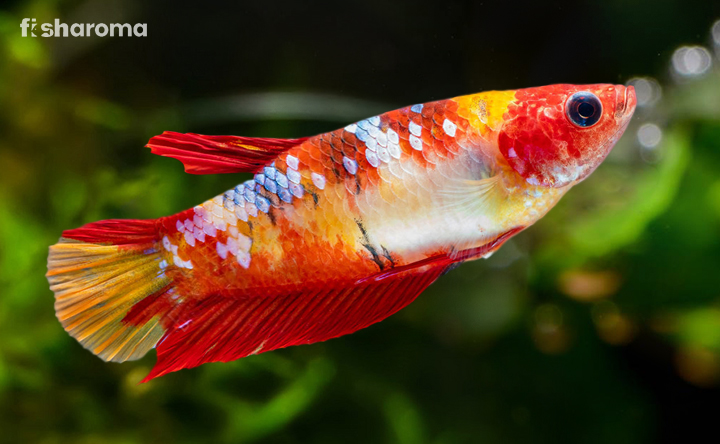
- Origin & Habitat of Female Betta Fish
- Appearance of Female Betta Fish
- Behaviour of Female Betta Fish
- Lifespan of Female Betta Fish
- Diet of Female Betta Fish
- Tank Requirements for Female Betta Fish
- Water Type for Female Betta Fish
- Compatibility of Female Betta Fish
- Breeding of Female Betta Fish
- Diseases of Female Betta Fish
- Summary
Betta fishes, also known as the Siamese Fighting Fish, in general, are probably the most aesthetically appealing tropical fish to look at. Beauty is not their only point-of-interest, as their aggression is very entertaining to witness.
The overall aura of this magnificent breed draws people all over the world to them. Aquarists love how perfect they are! So what are you thinking about? If you have a plan to own this wonder in your tank, let us guide you through everything you need to know in this complete care guide.
Key Specifications
Some quick intel on these beauties:
| Scientific Name | Betta splendens |
| Origin | Southeast Asia-River basins in Thailand. (Chao Phraya river, Mekong River in former Siam), Myanmar, Indonesia, Vietnam, Laos, Cambodia. |
| Lifespan | 2-5 years |
| Colours/Patterns | Colour changes with time. (White as Juveniles) |
| Temperament | Semi-aggressive |
| Size | 2.25-3 inches |
| Diet | Carnivorous |
| Family | Osphronemidae |
| Compatibility | Peaceful shoaling fishes, alone or in groups. |
| Tank size | 10-20 gallons |
| Care level | Easy |
| Water preference | Freshwater |
| Breeding | Egg layer |
Overview
Betta fish (Betta splendens) is from the Osphronemidae family, in the order Anabantiformes. There are a total of 73 species in the Betta genus, where the Siamese Fighting fish is altogether known as Bettas. However, it is hard to find females in the trade because males are commonly purchased. These fishes are extremely popular in the aquarium trade for their behaviourisms, beauty and easy care routine. And, guess what? They are Labyrinth fishes too! Read on.
Origin and Habitat of Female Betta Fish
The Female Betta fishes, including the male variants, originated at least a thousand years ago via domestication. Their history of origin is rich and the location is known to be the waters of Thailand. Moving to the present times, they are found all throughout Southeast Asia. Places like Cambodia, Thailand, Vietnam, Malaysia, Laos, Indonesia are known to be associated with their place of origin.
Shifting focus to their habitat, they prefer rice paddies as that hits home all the way to Asia. Otherwise, they like slow moving warm waters, like river basins. Our focus, however, is on the female variant, but both males and females have the same preference when it comes to Bettas.
Appearance of Female Betta Fish
Bettas have sexual dimorphism, so it’s not complicated to tell a Female Betta Fish apart. The size and colour differences are clearly visible. Females usually are smaller in size. They are not as vibrant as Male Bettas, so their vibrancy or fins are comparatively different and less showy.
To clearly separate a Female Betta visually, just look for a small hole known as an egg spot. The ovipositor tube releases the eggs at the time of breeding and that outlet can very well distinguish the two sexes with ease. Let’s have a closer look at how our Female Bettas actually appear:
Colour
As Juveniles, females usually come in white. Although, their palette is not really that different from males. They are available in pulchritudinous shades like blue, red, purple, black, white and orange. The other rarer colours include copper, turquoise and metallic.
These fishes can have both solid colours, or a melange of multiple shades with unique tails. Crowntail Betta and Veiltail Betta are few of the categories produced accordingly, with distinguished appearance alongside their striking tails.
They are known to change their colours throughout their life, one of the reasons being changes over stress. The Female Betta fishes may react to stress with dullness in their colouration, or temporary loss of the same.
In some scenarios, they can have stress stripes, running vertically through their bodies. Another time, when you can see the same stripes, but about six colourful stretches, it is at the time of breeding. This indicates that the females are ready to mate.
Size
The size range of the Female Betta fishes is 2.25 inches, max 3. However, females usually stick to the mid 2 inches range.
Behaviour of Female Betta Fish
Female Betta Fish is hardy, so naturally they are able to handle variations in parameters and conditions pretty well. Additionally, their labyrinth organ ability compliments their tough self. A Betta fish in general is usually marked for their aggression, but our female variants are comparatively less aggressive. Nevertheless, even after falling under the semi-aggressive category, the females don’t take a back seat from fighting. Establishing some sort of hierarchy is in them, and they could be territorial as well. The fights are not really that damaging compared to males.
Essence of their rage is mostly towards other Betta fishes, although they are fine with other species. The Female Bettas are usually surface and middle dwellers, where they slowly swim about flaunting all their flowy beauty throughout the tank. The female variants are capable of changing their colours according to their mood. The brightest intensity in colouration is mostly seen when the Female Betta is successfully asserting dominance as per their expected social hierarchy.
To breathe atmospheric air through their labyrinth organ, they are near the surface, allowing them to inhale oxygen. However, they are fishes at the end of the day. To see them trying to breathe air can also be an indicator for unfit water parameters, hence poor conditions. Like other fishes, their regular gills are what they majorly use.
Lifespan of Female Betta Fish
The Female Betta Fish live for about 3 years in captivity. Females can be in trade as early as 6 months, and they have a longer lifespan than their male counterparts.
It’s not really the most impossible scenario to see a Female Betta fish live up to 4-5 years, provided they are kept in their dream tank and handled with care. What lifespan won’t be prolonged if you provide them with everything they require?
Diet of Female Betta Fish
These Bettas are a fan of food items that are dense in nutritional content. So keeping their preference in mind, there’s a range of things that are fit to be fed. Although, one thing that you must keep in mind, is that they love live food.
Here goes a healthy menu for our precious Bettas:
- Frozen fish food
- Dried fish food
- Live fish food
All of the above should be high in protein content.
Other important choices:
- Bloodworms
- Brine Shrimp
- Daphnia
- Mosquito Larvae
- Zooplankton
Tank Requirements for Female Betta Fish
Tank requirements are of maxed out importance when it comes to the health of our beloved Female Betta Fish. Let’s have a brief look at the necessary:
Tank Lid
The Tank lid plays quite a part, when the matter comes to the fish’s protection. Bettas are known to be slow swimmers, who swim about gracefully in the tank and rest frequently. Still, their surface dwelling nature may pose a threat to the fish’s life. In that case, it’s best to have a tank lid or hood. Otherwise, a hood protects the water from exposure, that can be caused by potentially harmful foreign elements.
Tank Size
Provide a tank size of about at least 10-20 gallons for the Siamese Fighting Fish to exist with peace and comfort.
Substrate
The Female Betta fishes or just Bettas in general, love a sandy substrate. The fine grains within doesn’t allow the fish to bottom-feed scratching through the substrate. Fluctuating substrates that alter the water are not welcome either, as they have a preference when it comes to water hardness. (More on that in the Water Type section below)
Filter
Betta fishes in general produce ample amounts of waste, so a strong filter is necessary for proper water clearance and oxygenation. Bacterias with benefits can also be maintained in the tank with the help of a filter. It clears out and neutralizes the nitrate and ammonia content in the tank which may seriously prove to be detrimental to the Female Bettas overall health. Addition of a filter will definitely cut you some slack in the maintenance department.
Ornaments
Female Betta Fishes could do fine with some stimulation that these tank decor and ornaments bring in. They are not really that picky about it, so to play it safe try including a few things like hiding spaces, bubble nest-friendly spots or resting places. In easier words, provide enough artificial and natural vegetation, hanging bridges, caves etc to make their experience perfect.
Lighting
Bettas love their lighting on the brighter side. In that way, they know when to wake up and sleep when it’s comparatively dim or shadowy. LED lights are totally fine for a Betta fish tank.
Presence of Flora
They really appreciate the presence of handpicked, good vegetation density in their tank. So, presence of flora is really important in a Betta Fish Tank. Let’s see some plants you can add:
Cleaning Method
A cleaning method, that’s done the proper way, is really important. It is very likely that you will face danger dealing with your tank, if you don’t follow through with the proper procedures to keep the tank health intact. Don’t forget to monitor the parameters, and other underlying conditions with care and replace the aquarium water regularly or with proper time intervals. Besides all these important points, don’t forget to clean the tank sides with a cloth, cotton preferably. Usage of proper filters and proper aeration is our recommendation.
Water Type for Female Betta Fish
The water profile or the water type should be intact at all times. A lot of factors rely on it, like the entire health and lifespan of the fish along with the overall tank environment.
Let’s have a look at the parameters:
| Hardness | 3-4 dGH, 3-5 dKH |
| Temperature | 23.8-27.2 Degrees Celsius |
| pH | 6.5-7.5 |
Hardness
Female Betta Fish like their water soft. Certain substrates keep altering the general hardness, carbonate hardness and even pH! So, that should definitely be avoided in this case to keep the scenario intact. Cutting to the chase, the general hardness should be about 3-4 dGH and carbonate hardness around 3-5 dKH.
Temperature
Warm waters are necessary as cold water can go as far as, actually killing your precious Betta fish. The temperature range should be 23.8-27.2 Degrees Celsius to be really precise.
pH
The Female Bettas love their water acidic, so maintain a pH level of 6.5-7.5.
Compatibility of Female Betta Fish
It is hard to house Betta fishes together, unless they are ready to mate. Most peaceful species and bottom-dwellers, who can defend themselves, are a good pick for them. Species specific, however, is not really a good option because of their aggression issues. Female Betta Fish is definitely more balanced in that department compared to males. So, it is surely an added advantage for you.
Suitable Tank mates
Lets see some buddies who can exist harmoniously with these rainbow beauties:
- Kuhli Loach
- Ember Tetra
- Harlequin Rasbora
- Trumpet Snail
- Cory Catfish
- Guppy
- African Dwarf Frog
- Neon Tetra
Unsuitable Tank mates
Avoid aggressive Tank mates that can bully your beautiful Female Betta fish. In the long run, it will affect them and cause stress. As a result of which, these fishes will certainly lose their colouration. Other than that, fishes who are too naive or unable to protect themselves due to many factors like size or nature, should be left out from a Betta tank. Make sure to remove fin nippers as well, as the long, gorgeous, flowy Female Betta fins will attract their attention.
- Shrimp
- Goldfish
- Tiger Barb
- Cichlid
- Gourami
- Dwarf Pea Puffer
- Rainbow Shark
- Axolotl
- Turtle
Breeding of Female Betta Fish
Everything needs to be done step by step, if you are trying to breed your precious Female Betta fish. We will guide you through right from the start:
Introducing the Female Betta
It all starts after you separate the two sexes before the process actually starts. Slowly introduce the males to your focus female variants and steadily allow them to mingle in the breeding tank.
Preparations
Make sure the breeding tank has perfect conditions. The tank water should have a temperature of at least 26 Degrees Celsius, as warm waters are good for the process itself. Provide the Bettas with nutritious food, mostly high quality and live. Feed them around 4 times a day, more or less depending on the situation and demand, make sure you don’t overfeed them.
On-set of the Breeding Process
After the pair is interested in each other after introduction, the Female Betta Fish starts causing a darkening effect in her colouration. On the other hand, the males build a nest made off of sticky saliva bubbles, formally known as bubble nests.
After the female takes a look at the nest, if she likes it she will allow the progress of the process. There’s going to be a lot of biting and chasing around the tank. On success, the male fish would securely collect the eggs and put them in his nest.
Hatching
Don’t forget to remove the female after the breeding process has achieved completion, because they are very much prone to consuming their own eggs. The fry takes about 2-3 days to hatch. After the fresh batch of fry is successfully released, do feed them with nutritious and easy choices like infusoria or baby brine shrimp.
Diseases of Female Betta Fish
The Female Betta fishes are exquisite beings which are beautiful and hardy. That does not mean they can’t get affected by the fatal diseases out there for most freshwater fishes.
A few diseases that mostly affects them besides the wide range of freshwater diseases:
- Fin Rot- A common Betta fish disease is Fin Rot, which is a bacterial infection. The fins, mouth and long fluttering tail gets mostly affected. They rot away and get completely ruined with time.
- Constipation- It happens when you overfeed your Female Betta Fish. It causes lack of appetite, no excretion remains in the bottom layer of your aquarium and a swollen abdomen.
- Ich- It is a parasitic infection caused by an ectoparasite Ichthyophthirius multifiliis, causing white spots on the fish’s skin giving itself a name of “White Spot Disease”.
- Velvet- A disease caused by the parasite Oödinium, which is a dinoflagellate. It is also known as the Gold Dust Illness.
- Swim Bladder Disease- Affects the Bettas swimming ability, caused as a result of a bacterial infection.
- Fungal infections- Formation of spores caused as a result of damage to the Betta fish’s slime coat. The fish seems to have a cotton-like appearance.
Treatment
Some ways of treatment and prevention are as below:
- There should be a hospital tank or treatment tank where the sick fishes could be quarantined with safety. This also stops the further spread of issues from the fish or fishes in question.
- Monitor the tank well for early detection of diseases.
- Make sure the medication you choose for your Female Betta is appropriate. See an expert if it is hard for you to tell.
- Carefully look out for parameter instabilities, in order to keep their health in check.
Summary
In our opinion, Betta is a very appealing fish of immense beauty. They look marvellous in the tank along with their strong durability in the tank. It’s a little tricky to pair them up, but they still do well with most peaceful species and bottom-dwellers which is a fair balance. They are an all-rounder, however the availability of Female Betta fishes is a little less comparatively.
They are vibrant enough and their aggression also is more balanced compared to the male variant. There is no reason why you shouldn’t get them, as long as you find them. Pretty unique just the way they are, just make them your next aquarium addition. It’s worth it.
Similar Care Guides you may like
- Black Orchid Betta Fish Care Guide: This fish with similarly beautiful colouration, simple yet bold never fails to get your attention in the aquarium. Want to know about their care routine? Check right here.
- Kribensis Cichlid Care Guide: This fish of mesmerizing appeal and easy care is sought after quite highly. To know more about this species, check this out.
- Blood Parrot Cichlid Care Guide: This extravagant fish species is from the Cichlidae family, winning hearts from their interesting colour gradient and long lifespan. Check right here, to get your hands on the important information you need!

